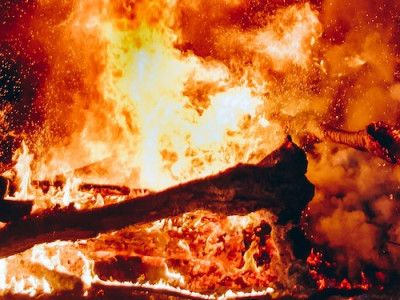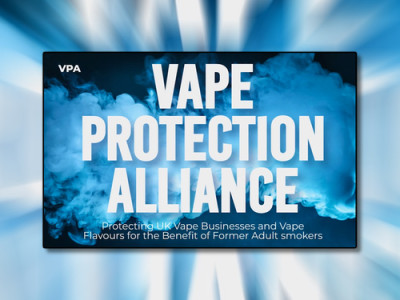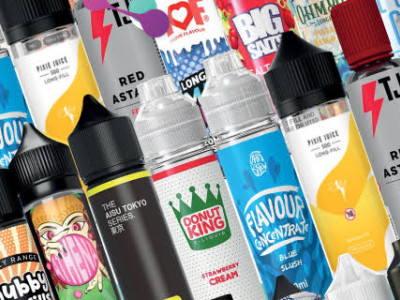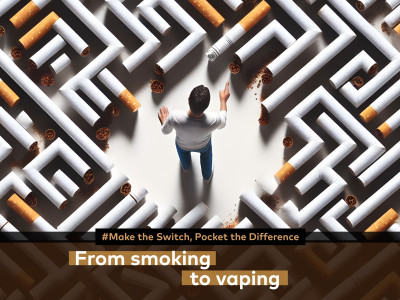What did Doctor Burstyn do?
- Rather than conducting a scientific investigation, Burstyn conducted a research review whereby he collected and analysed information already in the public domain.
Why should I believe what he says?
- He has an awesome beard.
What did he look at?
- Burstyn reviewed all of the data concerned with the make up of e-liquids and its chemistry.
- He compared research findings, advisory limits and standards agreed for safe levels of exposure.
- He made assumptions for worst-case scenarios meaning that he would assume the device was being used continually and that high nicotine content juice was used at a high temperature.
Where do the worst-case scenarios exist?
- These would be encountered in places like chemical production plants. The maximum safe exposure level in the production of PG liquid, for example.
How is this measured?
- He refers to the threshold limit value (TLV), which is the absolute maximum anyone should expose himself or herself to.
- In the worst case scenario it is the maximum an employer would legally be able to allow their employee to be exposed to in the chemical plant.
So, the worst-case scenario is still a legal and safe level?
- Yes, we can think of the worst-case scenario as still being considered as a safe level by industry standards, allowing their employee to remain healthy without any adverse effect to their health.
Does this cover all parts of e-liquid?
- No, Burstyn states that there is no industry standard for the inhalation of nicotine, no job requires it.
- He only looked at the other chemicals that travel into the lungs along with the nicotine.
How do we know what a safe level of nicotine is then?
- Burstyn reminds the reader that a nicotine user will self-dose to their required level.
- Vapers automatically adjust the duration of daily vaping or through selecting nicotine content in the liquid.
- Vapers will cease vaping when the desire for nicotine has been met.
What assumptions did Burstyn make?
- Vaping involves breathing in a small volume of vapour along with a large quantity of air.
- The amount of vapour taken into the lungs is minute compared to the volume of air breathed in.
- A vaper would vape for eight hours.
- A vaper would take 150 individual puffs during this eight-hour period.
- 8 litres of air would be breathed in every minute.
- That each time the vaper used the device they would obtain an equal amount of vape containing the same level of parts
But we don’t know what’s in e-liquid!
- Burstyn uncovered over NINE THOUSAND studies covering the chemical composition of e-liquid.
What were his results and conclusions?
- There is no data that supports the position that vaping e-liquid presents a health risk.
- The levels of all the chemicals that make up e-liquid are well below the TLVs.
- There is no cause for concern over the production or levels of acrolein or formaldehyde.
- The levels of tobacco nitrosamines are in such trace quantities that they do not pose any threat to health.
- The levels of tobacco nitrosamines imply no real risk for cancer.
- The levels of metals are at such small levels too that they to pose no harm
But what about those who tell us there is a danger?
- Burstyn states that those claiming they a danger exists are exaggerating or misrepresenting their findings.
Does he suggest any further action?
- Further research into the vaping of PG and VG in the quantities that vapers do.
- The creation of a machine to replicate the action of vaping so that the vape can be studied in more detail to identify compounds present.
Where can I get a beard like that?
- Unfortunately beards are not easy to come by.
Photo Credit:
Toby Kilroy
Journalist at POTVToby has been vaping since early 2012 and has used an array of devices and kit in that time. He sometimes writes up reviews but is often found with his head stuck in pages of code with a confused smile on his face. Toby also helps run his wife's site gethistory.co.uk and has two children. He sometimes fondly remembers having free time and occasionally manages to sneak away to put his head into a good book!
Join the discussion
Australia Burns
Australia is providing a shocking vision of how things could be in the UK if it continues down a prohibitionist road for vaping and vape products with violence and firebombings
Vape Protection Alliance: Fundraising To Fight Government
Vape businesses are coming together to fundraise £75,000 in order to challenge the government’s threat to vaping and vape flavours
Longfills as an Alternative to Disposables
The disposable vape ban will impact many people, but there’s no reason to be concerned… Grab yourself a pod kit and a Longfill and you’ll be back to vaping the way you want to, just in a cheaper, more environmentally friendly and legal way.
All Change As Industry Under Scrutiny
Despite vapers telling the industry it needed to act, intransigence resulting from over confidence has led to the entire sector being placed on notice of legislation












